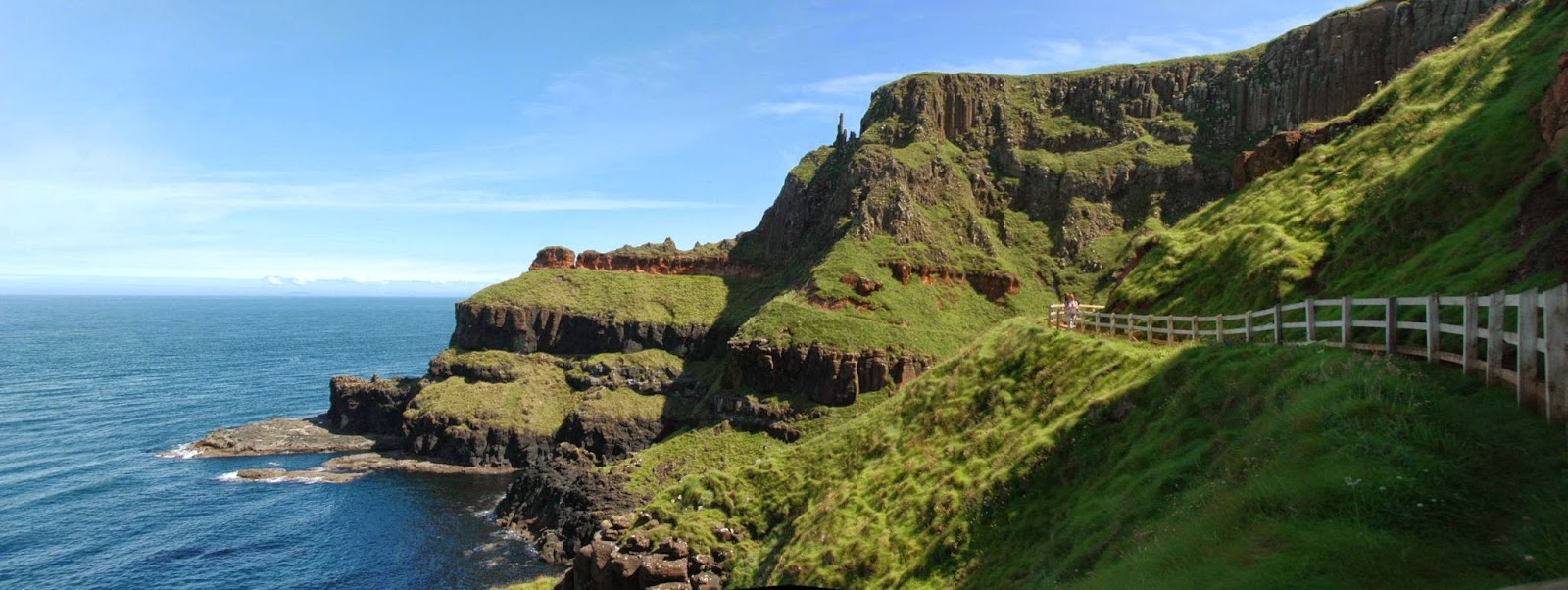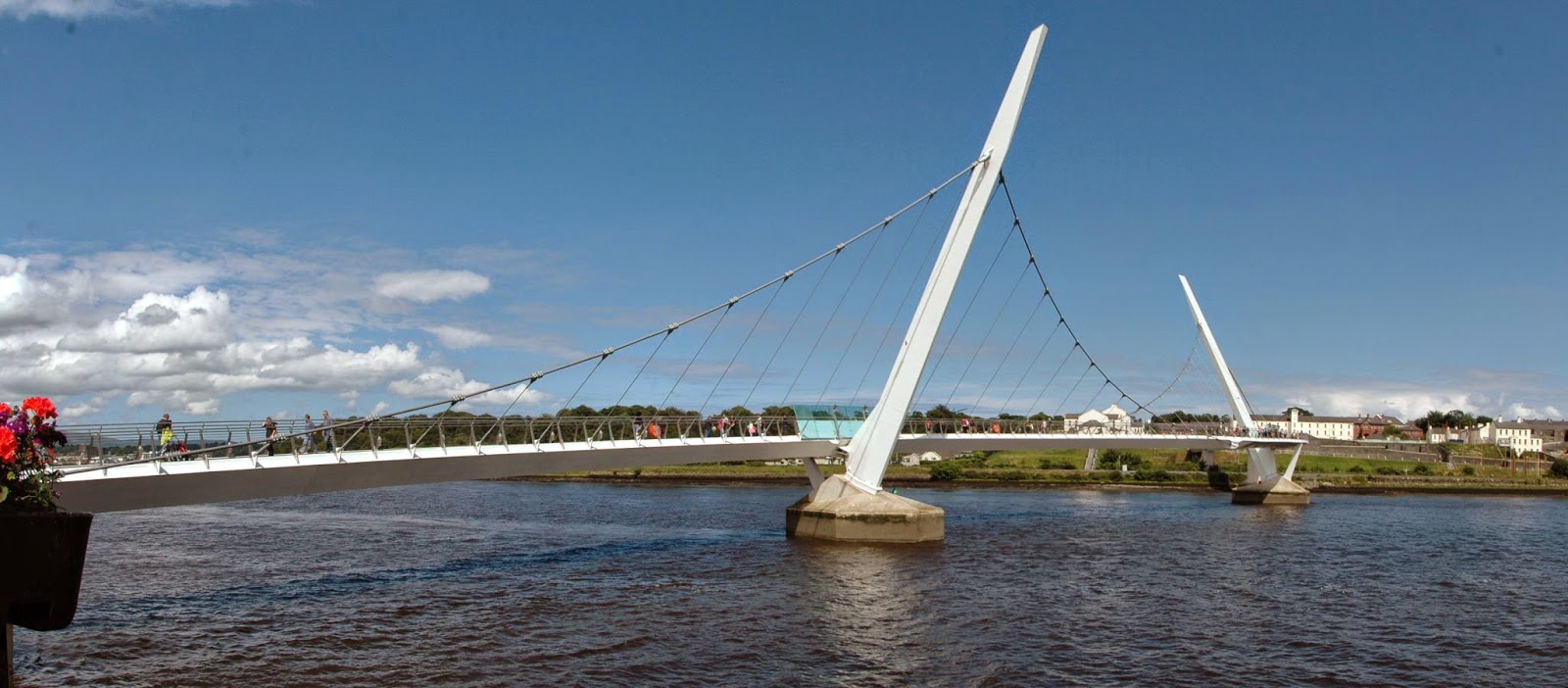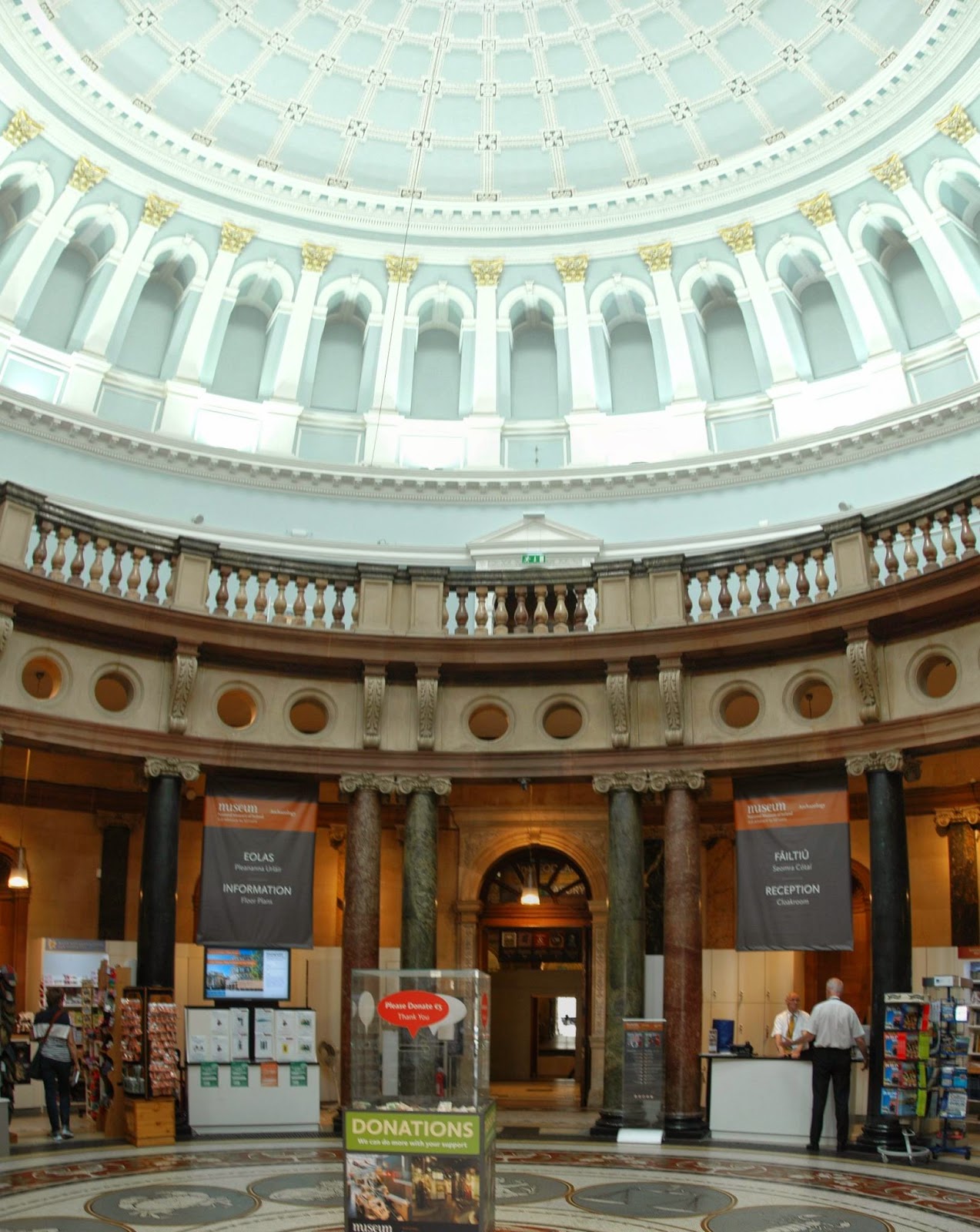Woke up in our layby, and got ready for an early start. No such luck! Somehow the lights had been left on for part of the night, and the battery was flat. A call to the RAC (fortunately, in Northern Ireland, our UK phones now work again), and about an hour later a very friendly roadside assistance man arrived. All we needed was the jump start, but of course he checked everything for us, and we had the usual long conversation — Northern Irelanders are no different from their southern cousins, much to our delight! A note for other travellers — make sure your RACQ (RACV, NRMA) membership is up to date — the reciprocal agreement they have with RAC and other motoring organizations has proved most useful for us!
At 10.30 we set off for the Giant's Causeway again, getting there by 11am. This time we walked down (after picking up tickets and audio guides again), taking our time to enjoy the walk. We found various named features, like the Camel, and Finn's Granny, and explored right round to the next point — quite a substantial walk, but not difficult. (Many of the named features relate to the myth of the Irish Giant, Finn MacCool, who built a causeway from Ulster to Scotland to allow him to challenge his enemies the Scottish Giants, but when he realised that Benandonner was much larger than him, he retreated to Ulster, tearing up most of the causeway on his way back.) We then walked back, and this time took the bus back up to the Visitors Centre, where Susie was able to buy some postcards and stamps, and we had scones and coffee. We also checked how to get to the Dark Hedges, for later in the day.
 Rathlin Island and Larrybane Headland at Carrick-a-Rede
Rathlin Island and Larrybane Headland at Carrick-a-Rede (Larrybane is The Stormlands in Game of Thrones
Next destination (also a National Trust site) Carrick-a-Rede. This is about 7 miles further round the coast, and is a small island which was right in the salmon run. Fishermen have been crossing to the island via rope bridge for over 250 years, but now it's the turn of the tourists. The rope bridge is well constructed, spanning 20 metres, about 30 metres above the sea below. Susie and I had no troubles crossing it (the attendant said that Aussies seldom have difficulty, as they are descended from people who survived walking the gangplanks of the transportation ships!). A couple of people reneged at the last minute, but there's little to worry about! Our suggestion for anyone who is contemplating the same experience is to pack a picnic lunch — once you get across onto the island it is just crying out for you to find a place to spread a blanket and picnic! Just don't make it too bulky, as there is a 1km walk, involving 182 steps, on the way in — and obviously on the way back. But the views, again, are spectacular!
Next stop, the Dark Hedges. This will mean nothing to anyone who hasn't been watching Game of Thrones, but there is a road, Bregagh Road, in Ballymoney, County Antrim (just opposite the Gracehill Golf Club) which has the most incredibly sinuous trees interlocking over the road. These were used as the location for the King's Road in the aforesaid series. Even without the special attention to lighting given by the producers, this is a most eerie place to be. And, for a simple country road, the number of tourists wandering up and down was quite impressive — there were English, Irish, Italian, Japanese — and a couple of Aussies.
Anyway, by now Susie and I wanted to settle down and get on with typing/writing/whatever. We decided to push out towards the coast, towards Cushendun, hoping to find a good viewing point on the way. We didn't make it — Susie spotted a picnic place in a forest, the Ballypatrick Forest, which was pretty deserted. It was deserted because the trails through the forest, normally open for drivers or walkers, are currently closed for harvesting operations. Which leaves the place pretty much to us! We anticipate a very quiet night!
Distance driven — today, 45 miles ( 73 km ); to date, 3,424 miles ( 5,511 km )












